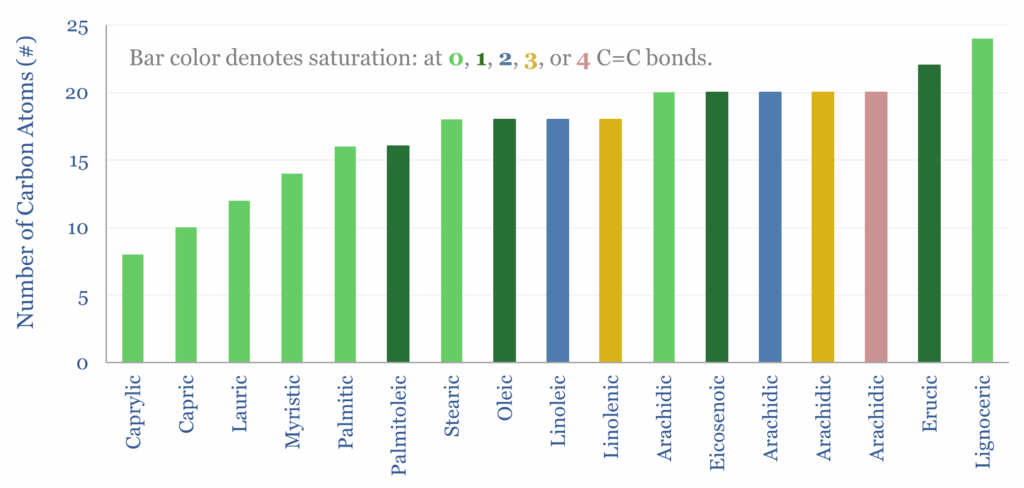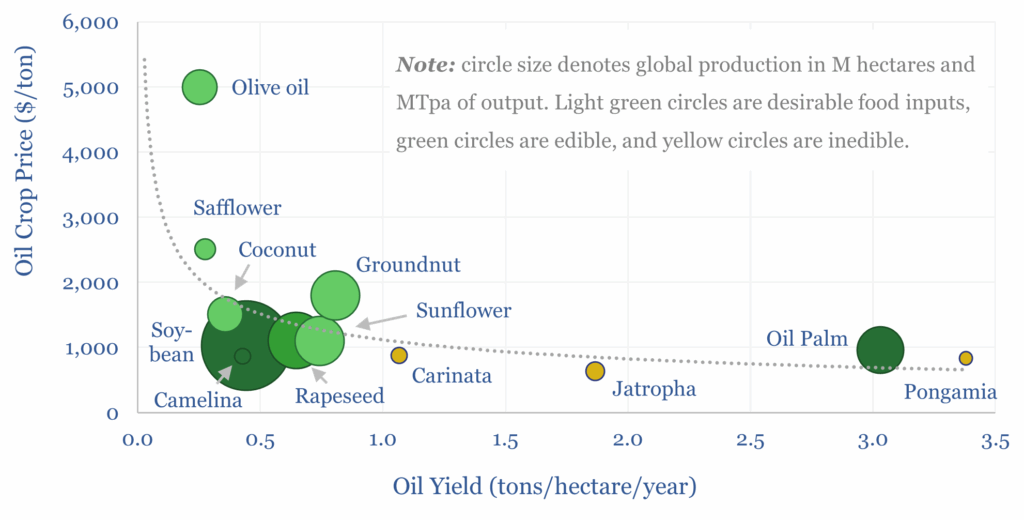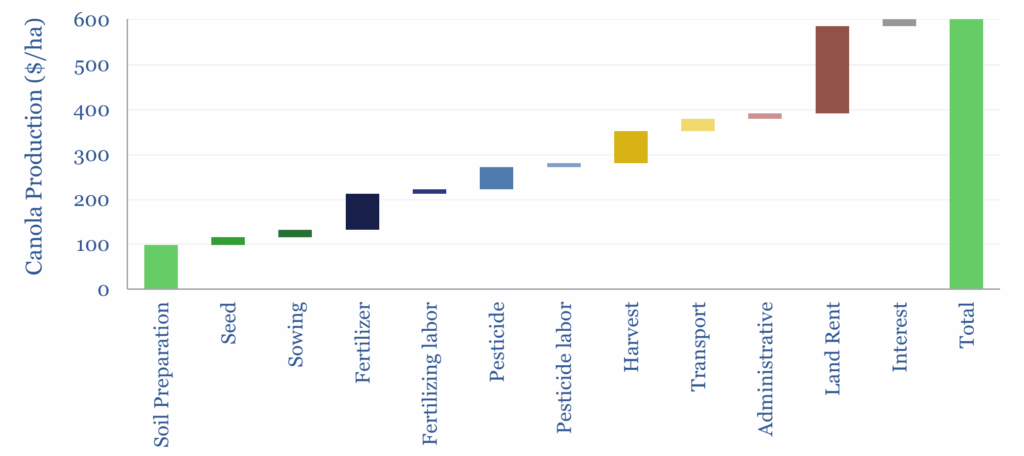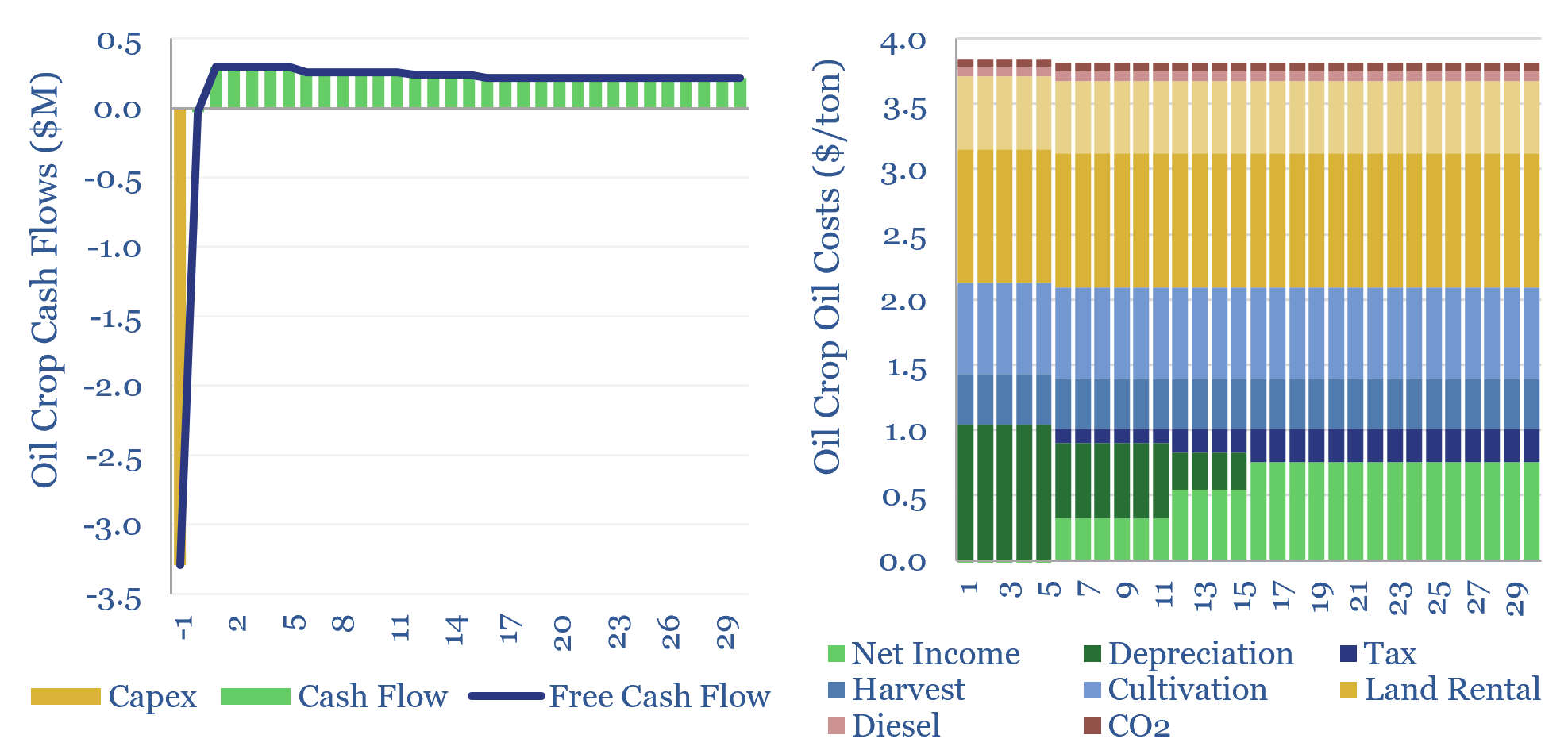The costs of oil crops, a crucial input for bio-diesel and SAF, will usually range from $900-1,200/ton, in order to generate acceptable 6-15% IRRs for producers. This translates into $3-4/gallon in feedstock costs. These oil crops also likely embed over 2 kg/gallon of CO2 intensity. The economics of oil crops can be stress-tested in this data-file, especially for palm oil, rapeseed oil (aka canola oil) and novel biofuel crops.
300M hectares of agricultural land are given over to producing over 200MTpa of plant-derived oils, especially palm oil, soybean oil, rapeseed (canola) oil, sunflower oil, and to a lesser extent peanut (groundnut), coconut and olive oil, within the global food system. An overview of these different oil crops is given on the ‘crops’ tab.
These oils are triglycerides, composed of three separate fatty acids, ester-linked to a glycerol backbone. The ester bonds can be broken via trans-esterification, reacting triglycerides with methanol to produce Fatty Acid methyl esters as a bio-diesel feedstock and glycerol. Or triglycerides can be hydrotreated to produce drop-in fuels such as renewable diesel and SAF.

The costs of biodiesel and renewable diesel are mostly determined by the costs of input oils. Waste oils are cheapest, although they do require collection. However this data-file captures the costs of producing agricultural oils as a feedstock for bio-diesel, renewable diesel and SAF. These costs are heavily influenced by productivity and oil yields.

Rapeseed, aka canola, with its characteristic yellow flowers, is one of the world’s leading oil seed crops, especially grown in China, Canada and Europe, and some sources say that it comprises 80% of Europe’s biodiesel feedstock. We estimate production costs are c$1,200/ton for a 6% IRR on a farm (including a 4% rental yield on the underlying agricultural land). Input estimates in the data-file come from technical papers and other studies.

The data-file also captures the costs of producing palm oil, or potentially novel tree crops such as Pongamia (being studied in Australia as a novel biofuel crop). Again, economics are highly sensitive to yields.
The global agricultural system requires around 0.1 units of modern energy – e.g., natural gas for fertilizers, diesel for agricultural equipment – per unit of food energy. Hence we think 1 ton of agricultural oil will usually embed over 1 ton of CO2 per ton, at the farm gate. This is equivalent to 2.3 kg of CO2 per gallon of oil crop oil. For comparison, Scope 3 CO2 intensity of gasoline and diesel is around 9 kg of CO2 per gallon combusted.
